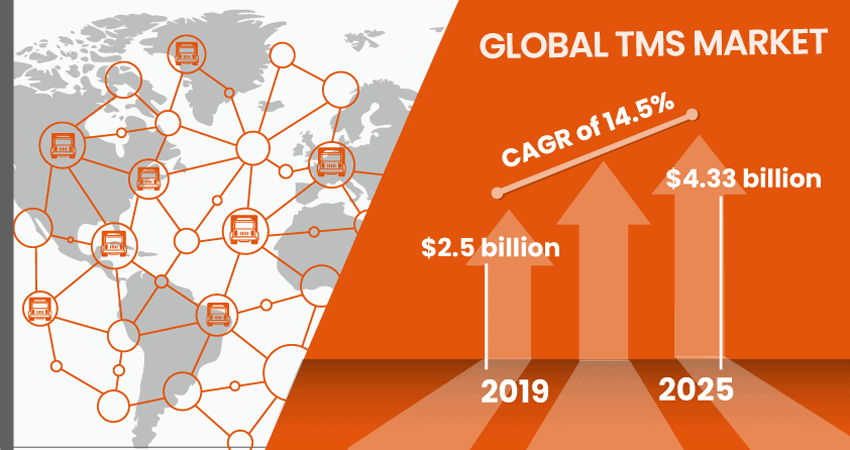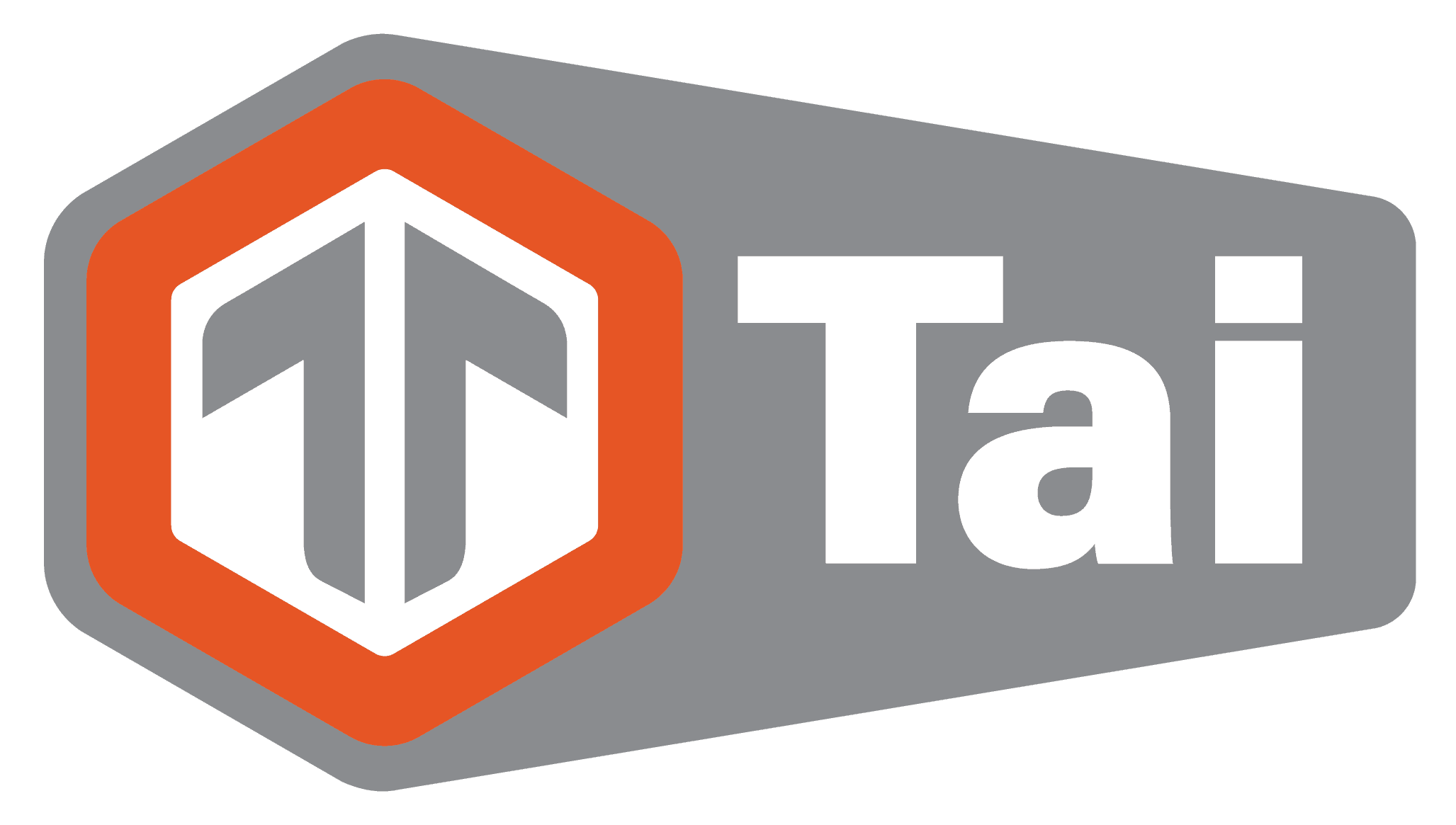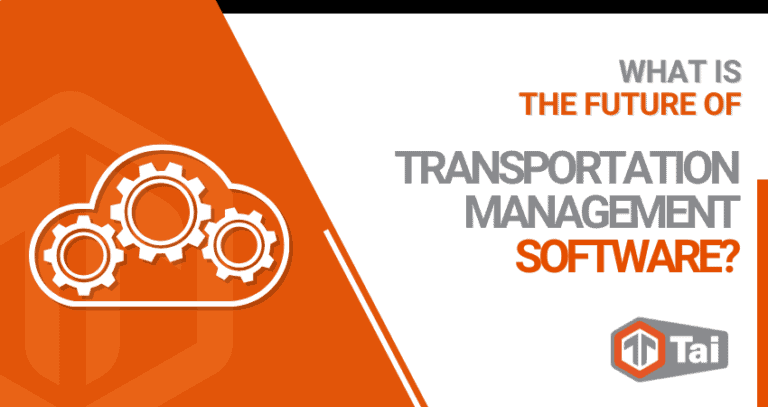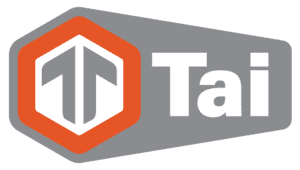Transportation management systems (TMS) have come a long way since their creation back in the 1980s. Back then, they were nothing more than rudimentary applications with basic features. Now they are a more efficient and affordable alternative to moving freight between trading partners.
Until recently, the main objective behind TMS was to increase efficiency and cut transportation costs by allowing logistics managers to choose between different modes and manage transportation orders. And while this is still true today, every latest TMS application looks to offer more comprehensive solutions that help increase the supply chain visibility and tackle the issues and complexities of today’s global shipping business environment.
TMS software is still largely confined to freight brokers, 3PL companies, and oversized shipping due to the relatively high implementation and maintenance costs. Traditionally, these have deterred most small and mid-level logistics providers from taking advantage of what a TMS system has to offer. However, the relatively recent introduction and proliferation of software as a service (SaaS) cloud-based TMS solutions has greatly increased the TMS market size. The global transportation management system market is expected to increase to $4.33 billion by 2025, up from $2.5 billion in 2019 and at a CAGR of 14.5%.

The transport management system sector is looking to meet the increasing customer expectations and demands. With every new generation of TMS, users are provided with enhanced mobility, better usability and optimization, and state-of-the-art predictive analytics capabilities. Below are some of the trends that we can expect from the global transportation management system market soon.
What Is The Future of Transportation Management Software?
As customer expectations keep on rising and global trade regulations continue to change, the need for a transportation management solution has never been higher. As time goes on, modern TMS solutions need to become more robust and incorporate more features that provide faster responses to customers and more detailed information to organizations. Machine learning enables TMS software to become more intelligent and offer better recommendations and accurate predictions.
Organizations can choose to integrate their transportation and supply chain management systems with other emerging technologies to further improve supply chain visibility and offer better customer service. In terms of what we can expect to see from the TMS market include the following:
Cloud-Based TMS
The main reason why most small and mid-level logistics businesses were so slow to implement a TMS solution was the high implementation and maintenance costs. However, what we see today is a shift towards cloud-based TMS systems that are much cheaper to implement and maintain.
With these types of solutions, those operating in the logistics industry will no longer have to invest in expensive architecture, servers, or dedicated staff. A TMS solution can be accessed from anywhere that there is an internet connection, making it easier to get real-time information and make quick decisions.
Enterprise Service-Oriented Architecture
Looking back, office systems like word processors, spreadsheets, and presentations started as individual applications that later merged to become a single office system. Similarly, next-generation TMS solutions will be built on the Enterprise Service-Oriented Architecture (SOA). This will allow all resources to be shared and split more seamlessly and effectively.
Full Integration with Other Technologies
Many TMS already come equipped with advanced freight, route, and network optimization features. The latest TMS systems and technologies in the logistics industry, such as GPS satellites, 3D printers, big data, artificial intelligence, machine learning, or mobile technology, are merging to enable transport management in newer and more effective ways than ever before.
Similarly, Internet of Things (IoT) devices and sensors are making real-time fleet monitoring, such as in-transit visibility of routes, driving conditions, and assets, a common occurrence. Freight transportation companies can lower their maintenance and fuel costs, reduce delays, and increase driver safety.
Integration with digital assistants (chatbots) offers immediate conversational responses regarding any shipment information, leading to better customer service and satisfaction.
Meta Intelligence to Leverage TMS Visibility
Developers are already experimenting with “meta intelligence” to leverage TMS visibility and big data into the decision-making process. The aim is to integrate the TMS system with different departments, including sales, marketing, distribution, and customer service.
Based on the business intelligence obtained from the transportation network, shippers and freight brokers will know the exact environmental and financial costs of every load in every lane. They will also be able to anticipate and adjust for any capacity constraints. Similarly, they will be able to achieve maximum use of their facilities by managing both inbound and scheduling appointments.
Machine Learning
By applying machine learning to trends and historical data, TMS systems can predict transit times with a much higher degree of accuracy. They can also plan capacity better, identify any at-risk shipments, such as any goods that are about to expire, and more. Enhanced AI will also enable logistics professionals to make more informed decisions regarding alternative routes during high traffic periods.
Blockchain
Blockchain technology is used to build complex integrations between freight brokers, freight forwarders, shippers, customers, and carriers. Various applications, such as intelligent track and trace, increase transparency and shipment visibility across the entirety of the supply chain. They also ensure the transfer of accurate and secure information.
Another blockchain solution used in the logistics industry and available in transportation management systems is cold chain management. This is used whenever different temperatures are needed to be maintained at various checkpoints along the supply chain. Some products may, for instance, require a cool temperature in transit and a slightly higher temperature on store shelves. The cold supply chain management can monitor the temperature across the entire supply chain, providing both the company and regulators at the country of origin with real-time information.
Top SaaS-related TMS Trends
While the value of a robust TMS is clear, companies may differ in terms of the level of TMS deployment, functions, and capabilities. Those that need a competitive advantage should start considering the benefits brought forth by upgrading their systems through a SaaS-based TMS.
Since these SaaS TMS are located in the cloud, they are also more affordable and adaptable, providing a higher degree of scalability and performance-critical functions that keep supply chain operations running smoothly, even during periods of high disruption like the COVID-19 pandemic. Below are some of the trends that you should be looking out for.
SaaS TMS Models Drive Higher Adoption
As one of the top TMS trends going forward, the proliferation of SaaS platforms has also changed how companies look at investments and consider upfront costs by comparison to the ROI. In addition, many software vendors and TMS providers are offering multiple options that include free or low-cost versions. Known as “freemiums,” these free or low-cost TMS versions offer limited capabilities, as they are designed to gain traction with users and eventually induce them into buying the premium version.
While this trend creates a TMS market with many more options, it can also have its drawbacks. If, in the past, the number of TMS vendors was relatively limited and manageable, today’s number of choices can become overwhelming and make it difficult to determine the systems that will be the right fit in terms of both cost and functionality. This can lead many to postpone their decision to implement a SaaS solution.
APIs Streamline Connection With Legacy Systems
Another leading trend revolves around the TMS implementation and the ability to connect with legacy platforms. A modern TMS can use application programming interfaces (APIs) to link to other software providers and extend their capabilities.
It’s important to keep in mind that implementing a traditional TMS often incurs the need for additional IT resources and even advanced coding know-how. Depending on the level of modification, such as the system customization, the IT costs can even surpass that of the TMS system itself. As such, companies may be inclined to forgo a TMS implementation and rely on their older systems. Luckily, SaaS platforms are based on user-friendly systems and an easy implementation process, which includes the integration with existing systems.
Takeaway
For many stakeholders, part of SaaS TMS systems’ interest is in their ability to replace people who are part of the freight management process. Of course, these systems’ purpose is to augment collaboration and reduce delays in freight quoting and booking.
TMS systems such as TAI Software serve to enhance the services provided by freight brokers. It’s a cloud-based solution that uses artificial intelligence to provide its users with a centralized platform that can automate the shipping and accounting process, increase their supply chain visibility, enhance customer satisfaction, and help freight brokers scale growth. Request a free TMS demo today!










